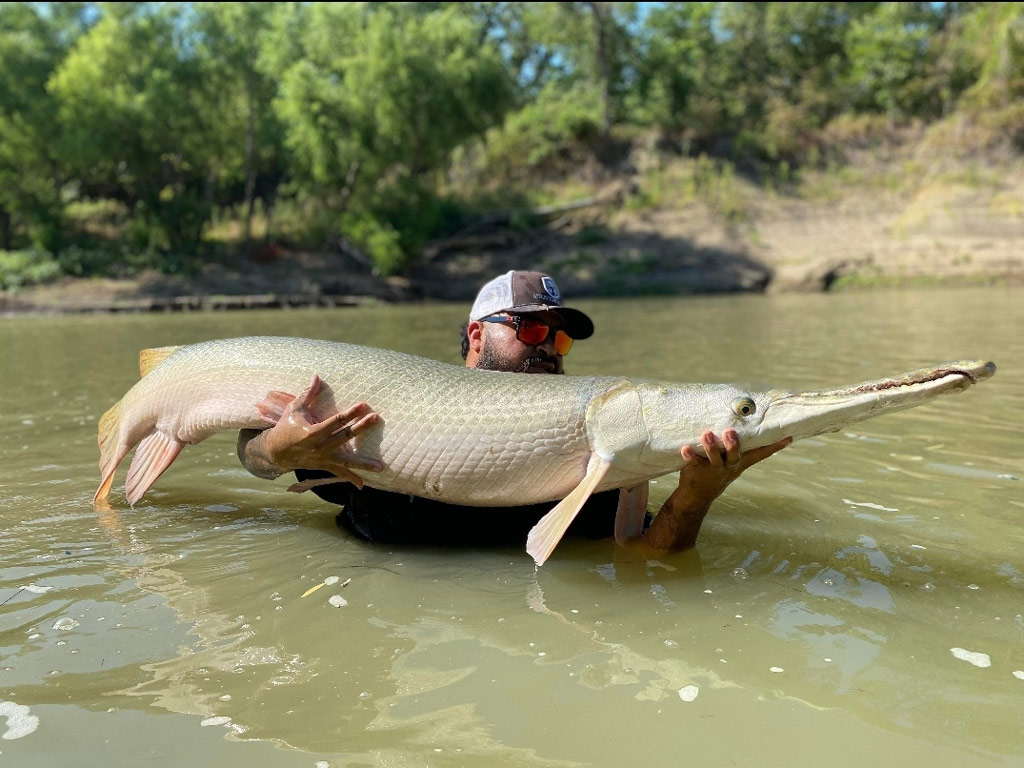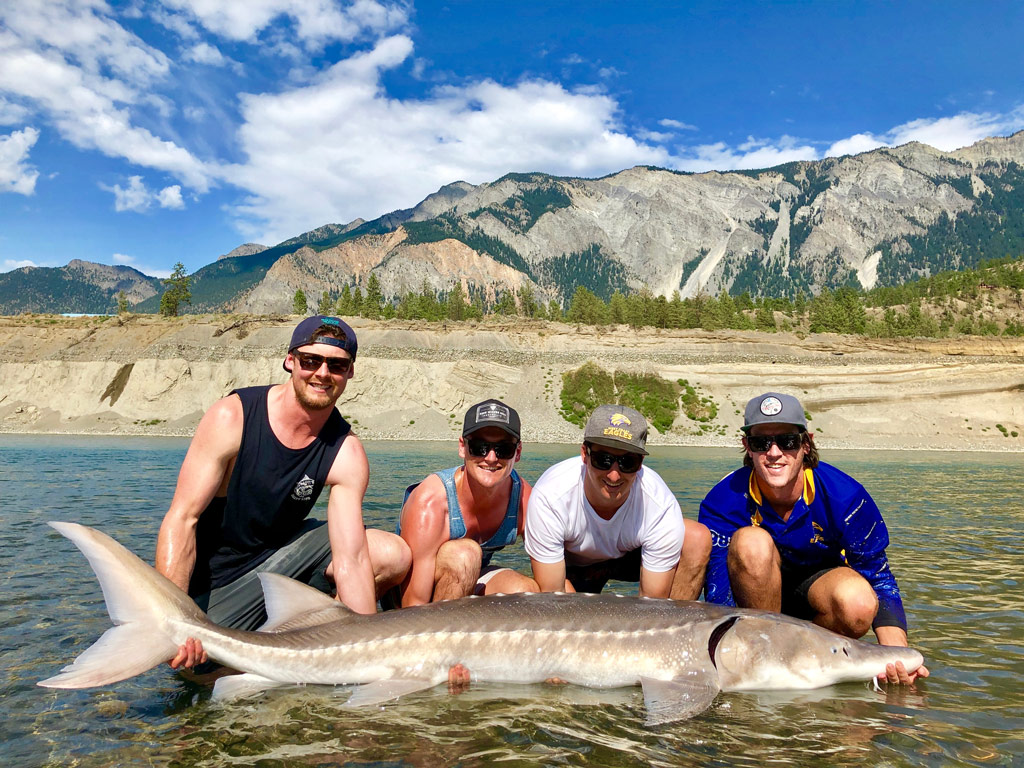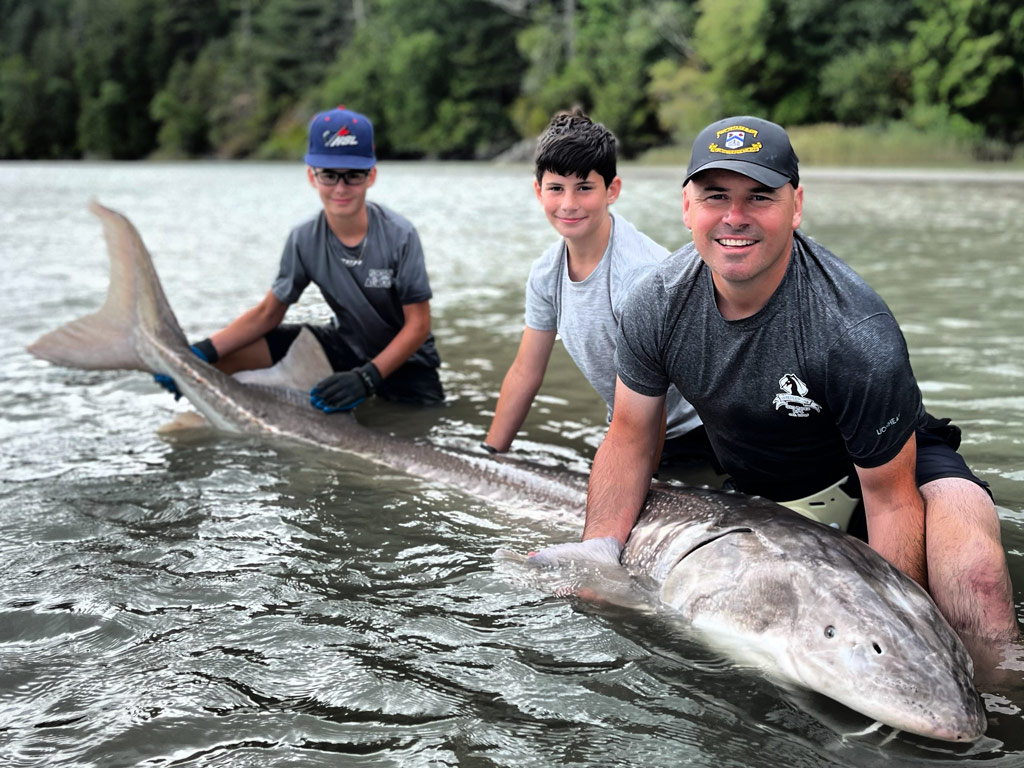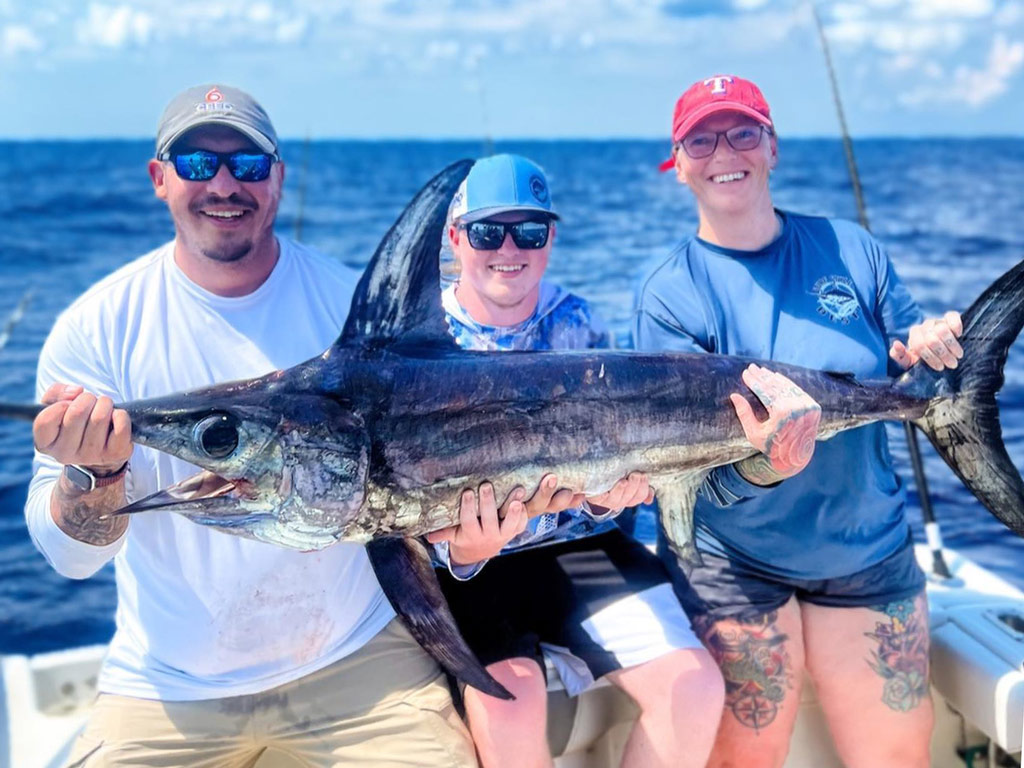Reading Time: 5 minutes
There isn’t an angler who hasn’t dreamt about reeling in a record-breaking fish. Be it for personal achievement or global recognition, there’s something utterly satisfying about laying your hands on a trophy catch. But there’s one more thing everyone loves doing just as much – talking about it, of course! So, let us talk you through some fish records.

Photo taken by Giant Alligator Gar Trips
In the following sections, you’ll learn more about state fish records and how they were made. Along with inspiring facts and an overview of how it all began, we’ll include practical guidelines on what to consider when submitting your own application for the next record-breaker.
We’ll be updating this article and adding more state and world achievements as new fish records emerge. Meanwhile, here’s what we’ve prepared for you…
What are you interested in?
State Fish Records
Do you know what the biggest fish ever caught in Florida was? Or the largest Catfish in North Carolina? What about the Texas state record for Largemouth Bass or the Minnesota Walleye record? We have the answers to these and many other similar questions below. To see all the record-breakers by species for Florida, North Carolina, Texas, Minnesota, and California, click on the following links:
Fish Records History
It’s difficult to pinpoint the exact moment in history when documenting big catches became a practice but the earliest record of a never-before-seen behemoth was made in 1817, long before the International Game Fish Association (IGFA) was established. The unbelievably large fish was a Sturgeon caught on the Black River in New York. This colossal creature weighed an astonishing 1,387 pounds and was a pure delight!

Photo taken by Fraser Canyon River Ranch
After the foundation of the IGFA in 1939, many anglers started reporting their catches, and states across the country began the practice of record-keeping. This paved the way for competitive angling which quickly gained popularity in the mid-20th century. Soon fishing was all about setting state and world records. By the 1980s, sportfishing and record-chasing were on every angler’s mind across the country – and the world.
State Record Certification
The approval of state records is a well-regulated process that involves several steps. The steps, however, vary depending on the state and its fish record requirements. Below, we’ll list the steps that typically all states follow when certifying a catch as the next record-breaker.
General Requirements
While the exact requirements differ across the country, each state will ask you to meet these criteria before your fish (and you!) can enter into the hall of fame:
- State Regulations. Regardless of whether you fish in Florida, California, or anywhere in between, you must obey the angling rules and regulations of that state. This means that you should have all the necessary permits for fishing and that you ensure your potential record fish is caught in season using legal equipment.
- Measurement requirements. Besides making sure your catch is in accordance with the state’s rules and regulations, you must also pay attention to how you measure it. To ensure accuracy, use certified scales. For some species, you may need to measure length and girth as well as weight.
- Species identification. Each state record claim calls for fish identification. With easily recognizable catches, this step might not require additional professional assistance. However, when identifying a fish is more challenging, a qualified biologist will have to confirm the species.
- Photos and witnesses. The most significant part of documenting your fish is proof. Take photos depicting your fish on the scale, you posing with your catch, as well as a view of the fish from different angles. Along with images, many states also require one or more witnesses to verify your story.
- Deadline for submission. Last but not least, there’s always a deadline for sending your documentation. The time frame during which you have to submit your Application Form varies and it can be anywhere from 30 to 90 days from the date of your fish. But if you ask us – the sooner, the better!
Application Form
Once you’re ready to submit your fish as a state record candidate, go to the Fish and Wildlife website of the state where you caught your fish. Each agency offers a free application form you can download. These forms usually ask you to specify:
- Your name and contact information.
- The category you’re applying for (e.g. Catch-and-release Record, All-tackle Record, Rod-and-reel Record).
- Catch information including species identification and fish measurements.
- Equipment and tackle used for reeling in the fish.
- Date and place of your achievement.
- Proof such as photos, witnesses, and/or certified weight slips.
Verification Process
After you submit your Application Form, the authorities will verify the information you’ve provided. Bear in mind that incomplete applications won’t be taken into consideration, so always double-check that you included everything that was required.
The verification process may last longer than expected as it may take some time for the agencies to confirm everything. We know it might be nerve-racking to wait but, at this point, that’s all you can do. Fingers crossed the waiting pays off!
Recognition and Publication
After the authorities have reviewed your application and approved it, you’ll be notified of the outcome. If your catch qualifies as the new state fish record, you’ll receive a certificate that reflects this. Some states will also award you a prize pack and different angling-related passes.

Photo taken by Mainlanders Sport Fishing
The newly-appointed title of a record-holder comes with fame, too. Not only will you be mentioned in various publications and featured by media outlets, but your photos and achievements will also be used in press releases and even promotional materials. Long story short, you’ll serve as an inspiration to aspiring anglers dreaming of catching their own trophy.
How You Can Catch a New Fish Record
While it might take some time to overthrow some species from their throne, it isn’t impossible. Fish records aren’t set in stone. The majority of anglers often return their prized catches to the water, so these giants are still lurking around – and even growing! Get out on the water and you could be a new record-holder and a proud owner of a trophy fish that everyone will talk about!

Photo taken by Reel Thrillz Coastal Adventures
We’ll keep on updating this article with new fish records. In the meantime, you keep on looking for that leviathan of yours. Tight lines!
Did you find all the information you needed? What state fish record was a surprise for you? If you have any additional questions or angling stories to share, hit the comment button below and tell us all about them.
The post Fish Records: The Complete Guide appeared first on FishingBooker Blog.
https://fishingbooker.com/blog/fish-records/
 CampingSurvivalistHuntingFishingExploringHikingPrivacy PolicyTerms And Conditions
CampingSurvivalistHuntingFishingExploringHikingPrivacy PolicyTerms And Conditions
